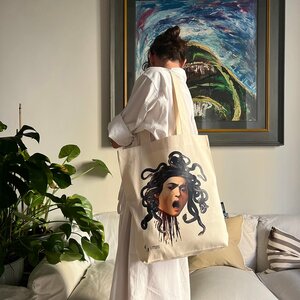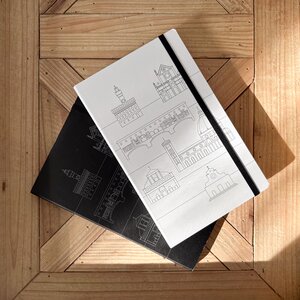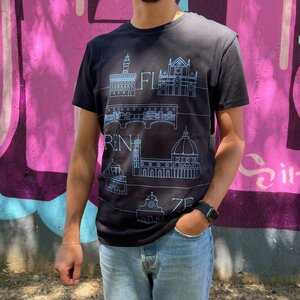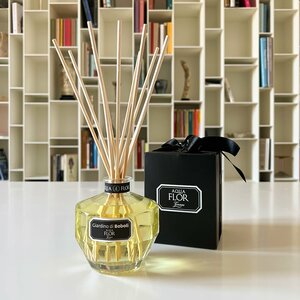Home / Experience / Baroque
Baroque

The Baroque originated in Rome in the aftermath of the Counter-Reformation, during a time of great change: the rise of absolutism in royal courts and monarchies, along with the Catholic Church’s renewed determination following the Council of Trent, marked the beginning of a period of deep cultural transformation.
Throughout the 17th century and much of the 18th, Europe experienced the influence of this new movement, which permeated all areas of knowledge, art and literature.
Meaning of the term
The word Baroque likely derives from the Portuguese barroco, meaning an irregular pearl or gemstone. It was first used disparagingly by late 18th-century neoclassical critics to describe a style considered excessive, whimsical, and extravagant.
Still today, the term evokes opulent golden decoration and emotionally charged paintings. A reductive interpretation, however, since in reality the Baroque actually permeates the entire culture of the period – from music to sculpture, science, philosophy, literature and architecture.
Rome: Capital of the new style
The origin of this profound and widespread renewal can be traced back to post-Council of Trent Rome. In response to the Lutheran Reformation, which had effectively split the continent in two, the Catholic Church sought to strengthen its grip on the faithful and reaffirm its greatness through an ambitious cultural programme.
Abandoning the rational, classicist style of the Renaissance, new artistic languages developed, centred on expressiveness and wonder – vital tools for the Church’s religious persuasion and propaganda. Unsurprisingly, this was the period in which the glory of Catholic saints was exalted, celebrated as models of life and virtue.
Rome became an open-air laboratory for this new aesthetic: splendid marble adorned ancient and new palaces and squares, while churches were renovated with sinuous lines, dramatic lighting and striking perspectives. Theatricality and grandeur became tools employed by those transforming the city.
From Rome, the new style quickly spread across Europe. Religious patronage, particularly at first, was the most common. Art, in fact, served as an instrumentum regni – a way to exalt the Catholic Church’s power and convince viewers of its supremacy over Reformed heretics.
Characteristics of Baroque art
In the papal capital, the classical taste of the 15th and 16th centuries gave way to decorative exuberance, with a clear preference for illusionistic effects. Although not homogeneous throughout its two centuries of development, the Baroque style is characterised by a strong interplay of the arts.
The result was monumental, complex works that used light and space to create both real and imagined forms.
Architecture
Light became a true architectural material, shaping volumes and changing their perception depending on how it fell. One of the most admired architects and sculptors of the period, Gian Lorenzo Bernini, embodied this approach — his magnificent church of Sant’Andrea al Quirinale in Rome is a perfect example.
Typical decorative features of Baroque style include the sense of striving towards the infinite, and the constant dialogue between interior and exterior created by curved, open lines that “embrace” their surroundings — to borrow a metaphor dear to another Roman Baroque master, Francesco Borromini.
His Oratorio dei Filippini, with its undulating concave façade, is an excellent example of this new spirit of design.
Painting
In painting – as in sculpture – the Baroque aimed to stir emotion and captivate the soul. Works are created with a realistic and sensitive rendering of the image, often with a dramatic, theatrical setting.
This tendency is already evident in Caravaggio’s paintings, constructed to portray reality with striking, almost brutal honesty.
A similar love of theatricality is found in the powerful female figures painted by Artemisia Gentileschi, a great admirer of Merisi. The same pathos appears in the sentimental force of works like Santa Rosa da Lima (1668) by Carlo Dolci, now at the Galleria Palatina in Palazzo Pitti. With its essential facial features, parted lips and ecstatic gaze, the work seeks to move the viewer with its stark, yet powerful impact.
Sculpture
In sculpture, the Baroque tradition finds one of its greatest exponents in the aforementioned Bernini. His Ritratto di Costanza Bonarelli (c. 1636–38, Florence, Museo del Bargello) and the Estasi di Santa Teresa (1647–52, Rome, Santa Maria della Vittoria) are among the finest examples of his style. Whereas Renaissance sculpture sought to portray the harmony of the human body, Baroque statuary aimed — once again — to emotionally overwhelm the viewer.
The spiritual forerunner of this innovation was Giambologna, who in the Mannerist period had already interpreted Michelangelo’s power with new forms, always marked by technical virtuosity. His sculptures soar upwards and outwards to impress and engage the viewer — the Ratto delle Sabine (1582, Florence, Loggia dei Lanzi) is a masterpiece of daring technique and formal balance.
An inheritance beyond art: Music and other disciplines
Music, too, underwent a similar evolution. In the activity of the 16th-century group of Florentine intellectuals known as the Camerata de’ Bardi, one can already discern the foundations of opera and melodrama – a fusion of music, singing and theatre.
In the early 1600s, to celebrate the marriage of Maria de’ Medici and King Henry IV of France, Jacopo Peri’s Euridice was performed — officially marking the birth of melodrama.
This new musical genre achieved huge success during the Baroque era thanks to its ability to stir emotion through elaborate staging, costumes, and the performers’ talent.
Although generally associated with the arts, the Baroque had significant influence on science and philosophy as well. This is evident in the work of Galileo Galilei, father of the experimental scientific method, and the writings of Immanuel Kant.
The decline of the Baroque
By the end of the 18th century, the dynamism of the Baroque gave way to the rigour of Neoclassicism, with its return to the simplicity and harmony of classical antiquity.
Nevertheless, the legacy of this artistic movement — born in Rome and spread throughout Europe — remains visible in many of our cities and monuments to this day.
Photo: Judith beheading Holofernes, 1614-1620, Artemisia Gentileschi
Related products
Related museums
From €16,00
Originally the residence of the wealthy Florentine banker Luca Pitti, this magnificent palace was purchased in 1550 by Grand Duke Cosimo I de’ Medici, who established his court there with his wife Eleonora of Toledo. After two centuries, from 1737, the palace was to be the residence of the Lorraine family, who succeeded the Medici in the Grand Duchy, and later of the Savoy family during the five years when Florence was the capital of Italy.
Average visit time:
2 hours








